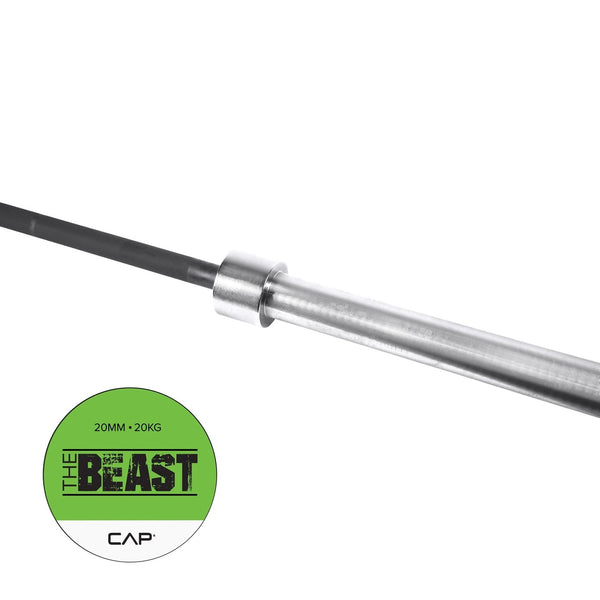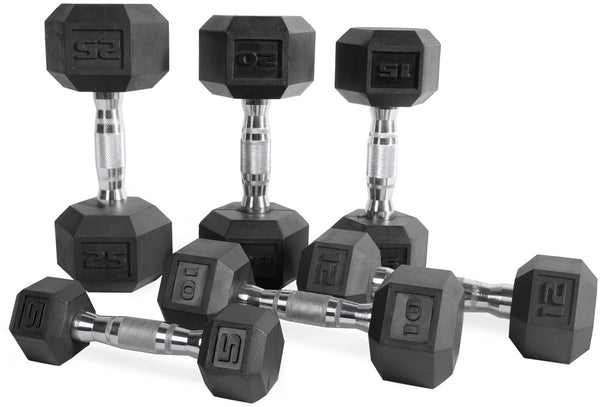Your Cart is Empty
October 01, 2023 3 min read
The overhead press is one of the most fundamental exercises in any workout regimen. It’s a compound movement that uses multiple muscle groups to help build upper body strength and size. The primary muscles used when performing an overhead press are the deltoids, triceps and trapezius.
Shop The Collection: BarbellsThe overhead press has many benefits, including increased upper body strength, better posture and improved joint stability. When performed correctly, it can also help you develop a powerful upper body and core. Additionally, it’s a great exercise for building shoulder strength and size.
 Shop The Gear: CAP Barbell "THE BEAST" Olympic Bar, 1000-LB Capacity, 7-ft, $145.99 USD
Shop The Gear: CAP Barbell "THE BEAST" Olympic Bar, 1000-LB Capacity, 7-ft, $145.99 USD
The overhead press also targets the smaller stabilizing muscles in the shoulders and arms, which can help prevent injuries. It’s important to ensure your form is correct when performing the overhead press, as incorrect form can lead to injury.
Shop The Collection: DumbbellsTo perform the overhead press, begin by standing with your feet shoulder-width apart and your arms at your sides. Grasp a barbell with an overhand grip, palms facing away from you. Brace your core and keep your back straight. Keeping your elbows close to your body and your wrists straight, press the barbell up until your arms are fully extended above your head. Slowly lower the barbell back to the starting position.
 Shop The Gear: CAP Barbell Rubber Hex Dumbbells, from $3.99 USD
Shop The Gear: CAP Barbell Rubber Hex Dumbbells, from $3.99 USD
When performing an overhead press, all three heads of the deltoid muscle are activated. This includes the front, side, and rear deltoids. Your triceps, or the back of the arm, is also used during the movement. Your trapezius muscles, located in your upper back, provide additional stability for the overhead press.
Your core muscles are also engaged when performing the overhead press. Engaging your core helps to maintain proper posture and form throughout the movement, which can help prevent injuries.
There are several variations of the overhead press that can help target different muscle groups. For example, the seated overhead press is a great way to target the front and side delts, as well as the triceps. You can also use dumbbells or kettlebells instead of a barbell to make the overhead press more challenging.
If you want to increase the challenge even further, you can add weight plates or resistance bands to the barbell. You can also perform the overhead press while standing on a Swiss ball or stability ball, which will engage your core muscles even more.
When performing the overhead press, it’s important to maintain proper form to prevent injuries. Make sure your back is straight and your core is braced throughout the entire movement. Keep your elbows close to your body and your wrists straight. As you press the barbell up, try to keep your chin tucked in to ensure your head is not pushed forward.
It’s also important to use a weight that is appropriate for your level of fitness. If you use too much weight, you could risk injury. Start with a light weight and gradually increase the amount of weight as you become stronger.
The overhead press is a great exercise for targeting the deltoids, triceps, and trapezius. It can help increase upper body strength, improve posture, and stabilize the joints. There are several variations of the overhead press that can be used to target different muscle groups. However, proper form is essential when performing the overhead press to ensure safety and prevent injuries.
Shipping Protection gives you peace of mind while saving you time and money.
Shipping Protection provides coverage for eligible orders that are lost or damaged in transit, or stolen after delivery has been confirmed by the carrier. MAGMA Fitness, through its partners, administers the protection program and may receive compensation for these services. Coverage is subject to the terms, conditions, and exclusions outlined in our Shipping Protection Terms & Conditions.